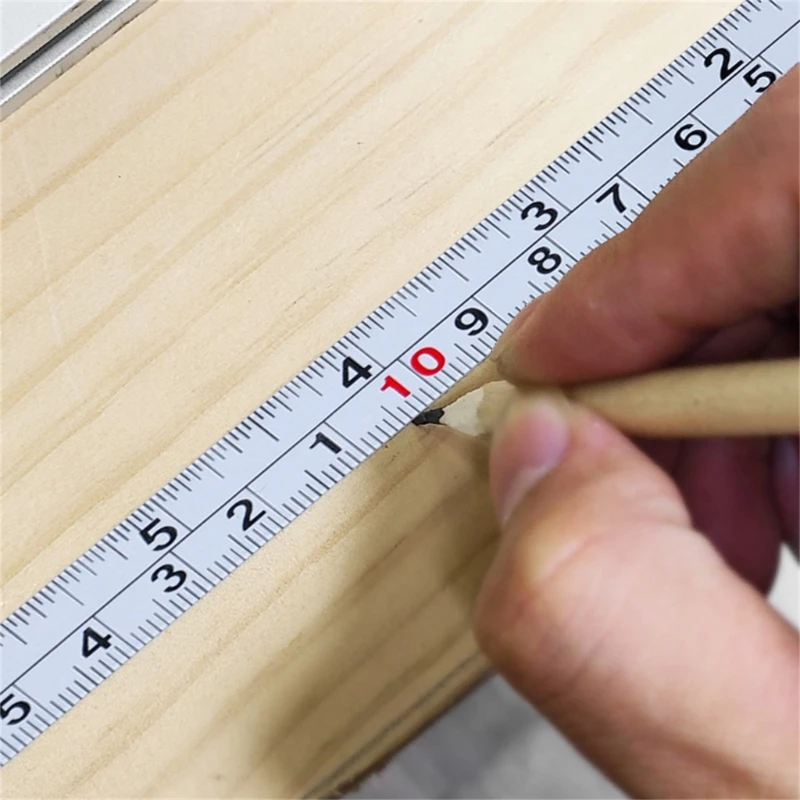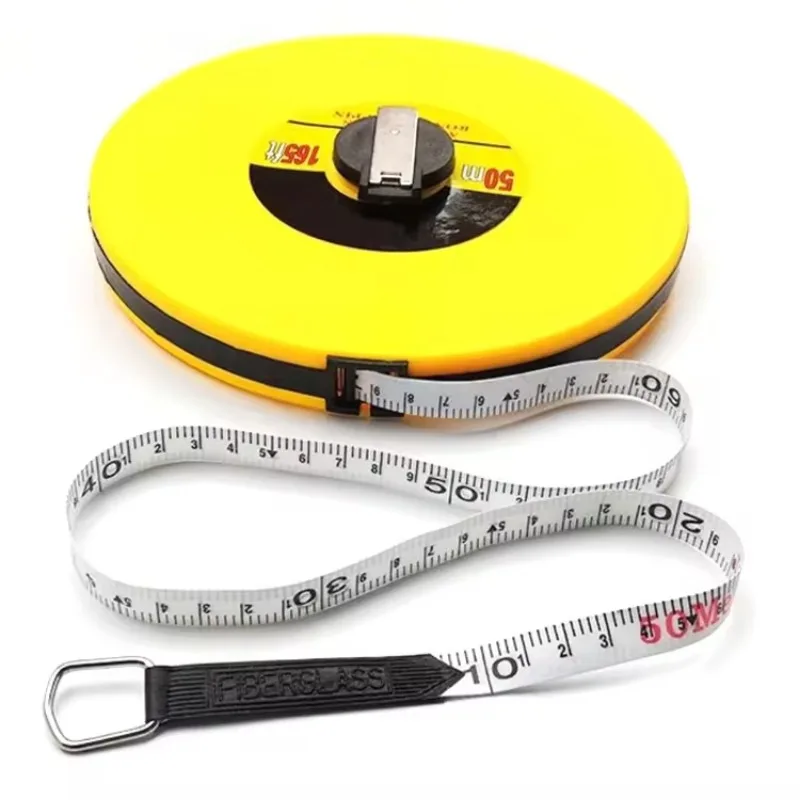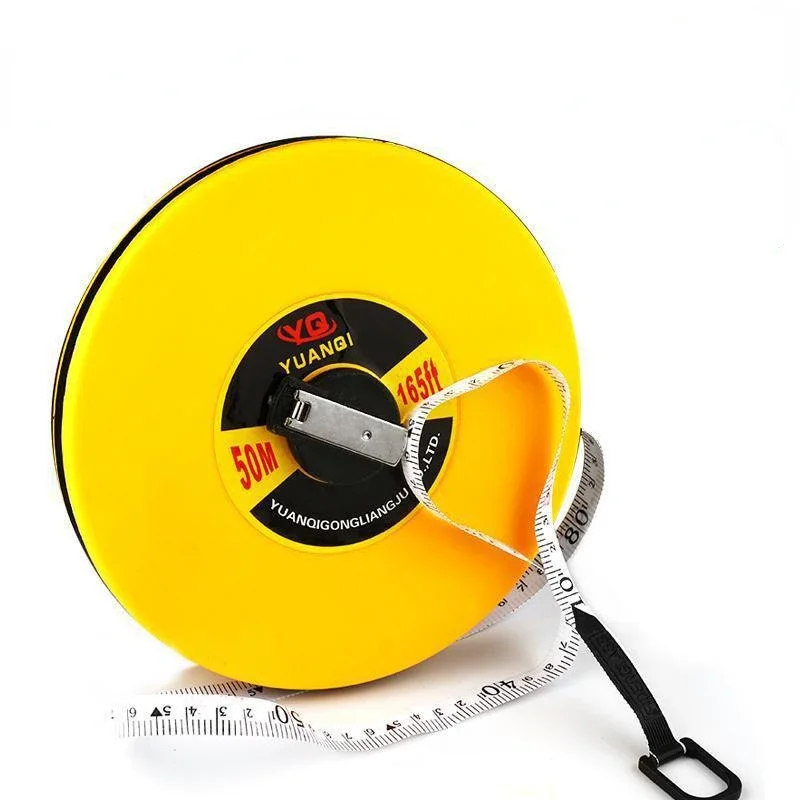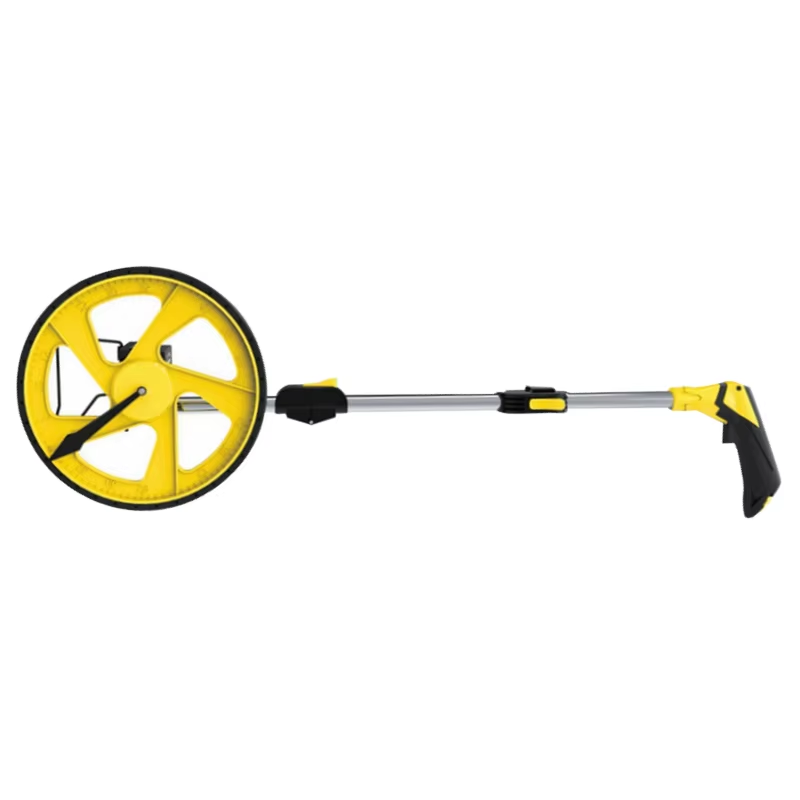
What to Look for in a High-Quality Carpenter Tape Measure
A carpenter tape measure is one of the most trusted tools in any builder’s kit. Whether framing a house, installing cabinets, or doing minor repairs, this compact device delivers accurate measurements with ease. Its retractable blade, durable housing, and clear markings make it indispensable on job sites and DIY projects alike.
Moreover, the design of a carpenter tape measure focuses on real-world functionality. It features a metal hook at the end that moves slightly to account for inside and outside measurements. This small detail ensures consistent accuracy every time.
In addition, most models include both imperial and metric scales. Dual-read markings help users switch between systems quickly. This versatility benefits professionals working with different blueprints or materials.
Also, the blade locks securely during use. A simple thumb button holds the tape in place. This allows solo measurement without needing a second person.
Furthermore, rugged cases resist drops and debris. Rubber overmolds absorb impact. Many tapes meet or exceed drop-test standards from OSHA and ANSI.
Many carpenters rely on the scribe tool built into the hook. They use it to mark wood or drywall directly. This saves time and improves precision.
Ultimately, a high-quality carpenter tape measure combines portability, strength, and clarity. It turns guesswork into confidence. And for anyone who works with their hands, it’s not just a tool—it’s a necessity.
 Why Every Builder Needs a Tape Measure
Why Every Builder Needs a Tape Measure
Every builder depends on accurate measurements. Without them, cuts go wrong and joints misalign. A carpenter tape measure provides fast, repeatable results. Therefore, it becomes the first tool pulled from the belt.
Also, speed matters on tight schedules. Measuring walls, studs, or trim takes seconds with a reliable tape. Time saved adds up over a full workday.
Durability is another key reason. Job sites are rough environments. Tools face dirt, moisture, and falls. A good carpenter tape measure withstands these conditions. Metal casings and reinforced blades last longer.
The self-retracting feature increases efficiency. After use, the blade snaps back automatically. No manual winding reduces fatigue over time.
Portability makes it easy to carry. Most fit snugly on a tool belt. Others clip onto pockets or pouches. Accessibility ensures it’s always within reach.
Additionally, the metal hook serves multiple roles. It latches onto edges for solo measuring. Some hooks have nail slots for hanging during layout work.
Accuracy builds trust. When cuts fit perfectly, rework decreases. Fewer mistakes mean higher quality and lower material waste.
Finally, safety improves when measurements are correct. Misaligned structures can fail under stress. Precise planning prevents costly and dangerous errors.
Thus, no serious builder starts a project without a dependable carpenter tape measure.
Key Features That Define a High-Quality Tape Measure
Blade width affects stability. Wider blades (1 inch) stay rigid over long spans. They don’t bend or curl easily. This allows extended reach without support.
Graduation markings must be clear. Laser-etched lines resist wear. Numbers appear in bold for quick reading. Red feet markers stand out against silver steel.
Hook play is essential. The end piece moves slightly to compensate for its own thickness. This ensures correct readings whether measuring inside or outside dimensions.
Lock mechanisms should engage smoothly. A strong latch holds the blade firmly. It doesn’t slip under tension. One-handed operation saves effort.
Housing durability matters. ABS plastic with rubber overmolding resists cracking. Drop-tested models survive repeated impacts from 10 feet or more.
Magnetic hooks add value. They attach to nails or metal studs. This frees both hands for marking or cutting. Especially useful in tight spaces.
Anti-slip texture improves grip. Textured casings prevent dropping. Even wet or greasy hands maintain control.
Some tapes include glow-in-the-dark coatings. These help read measurements in dark attics or basements. Nighttime work becomes safer.
Belt clips must be sturdy. Swivel designs rotate freely. They prevent snagging when bending or climbing.
Each feature supports real-world performance. Together, they define what makes a carpenter tape measure truly reliable.
 How to Read a Tape Measure Accurately
How to Read a Tape Measure Accurately
Start by extending the blade slowly. Let it lock into position. Avoid jerking it out fully. Sudden motion can damage internal springs.
Look at the largest marks first. These indicate inches. Each big line represents one inch. Numbers increase as you move along the blade.
Smaller lines show fractions. 1/16-inch marks are shortest. 1/8-inch are slightly longer. 1/4-inch even longer. 1/2-inch stands out clearly.
Read between the lines carefully. For example, a mark three lines past 5 inches equals 5 3⁄16″. Practice improves recognition speed.
Black and red numbering helps. Black shows standard inches. Red appears every 16 inches. This matches stud spacing in framing.
Use the hook correctly. For outside measurements, press the hook flat against the edge. For inside, let the hook pull back slightly.
Check dual scales if present. Metric readings run along the bottom. Switch systems based on project needs.
Avoid parallax error. View the blade straight on. Angled sight causes misreads.
Mark with a sharp pencil. Fine lines improve accuracy. Dull pencils create thick, imprecise marks.
Retract the blade gently. Slamming it in wears out the mechanism. Press the release button and guide it back.
With attention to detail, reading a carpenter tape measure becomes second nature.
Best Materials Used in Tape Measures
Blades are typically made from coated steel. Chrome or nickel plating prevents rust. Some use laminated film for added protection. These coatings resist corrosion in damp conditions.
High-tension blades hold shape better. Spring steel allows longer unsupported spans. Up to 8 or 9 feet extend without drooping.
Housings combine plastics and rubber. ABS plastic forms the core structure. Thermoplastic rubber covers impact zones. This mix absorbs shocks effectively.
Metal casings appear in heavy-duty models. Aluminum or steel bodies resist crushing. Ideal for industrial settings.
Hooks are stamped steel. Zinc-plated for durability. Riveted or welded to the blade. Strong attachment prevents breakage.
Recoil springs are tempered steel. They endure thousands of extensions. Quality springs last the life of the tool.
Some tapes use fiberglass blades. These don’t conduct electricity. Useful near power lines. However, they lack rigidity over distance.
Glow strips use phosphorescent paint. Charged by light, they emit soft glow. Helps in low-light areas.
Belts clips are molded plastic or metal. Steel clips resist breaking. Swivel bases reduce strain.
Material choice affects lifespan and function. Always match the build to your work environment.
 Top Brands Offering Reliable Tape Measures
Top Brands Offering Reliable Tape Measures
Stanley leads the market. Their PowerLock series is iconic. Known for strong hooks and bold print. Trusted by pros for decades.
Lufkin offers precision and comfort. Their Comfort Grip line fits well in hand. Graduations are easy to read. Popular among finish carpenters.
Klein Tools builds electrician-focused tapes. Magnetic tips and non-conductive options stand out. Also favored by general contractors.
Craftsman delivers value. Found in major retailers. Good balance of price and performance. Solid choice for homeowners.
Dewalt targets durability. Their Xtreme line survives harsh jobsites. Overmolded casing resists drops. Preferred in commercial construction.
Komelon uses innovative designs. Korean brand with global reach. Auto-lock systems and glide hooks improve usability.
Milwaukee packs toughness. Designed for demanding trades. Blade stays straight at full extension. Heavy-duty magnets included.
Frog Products focuses on readability. Large numbers and color contrast. Great for older users or dim lighting.
Irwin combines strength and innovation. Their FatMax series has wide blades. Reinforced hooks handle abuse.
Each brand brings unique strengths. Choose based on your trade, budget, and preferred features.
How to Maintain Your Tape Measure
Clean the blade regularly. Wipe off sawdust, grease, or grime. Use a soft cloth and mild cleaner. Prevent buildup that slows retraction.
Dry it after exposure to moisture. Wet blades rust over time. Towel-dry before storing. Keep in a dry toolbox or pouch.
Inspect the hook for damage. Bent or loose hooks affect accuracy. Replace if movement feels excessive.
Check the lock mechanism weekly. Ensure it engages and releases smoothly. Dirt can jam the switch. Blow out debris if needed.
Avoid dropping on hard surfaces. Impacts deform housings and misalign internals. Pick it up quickly if it falls.
Don’t force retraction. Let the spring do the work. Yanking the blade strains components. Guide it back gently.
Store it properly. Hang it or lay it flat. Don’t stack heavy tools on top. Pressure warps the case.
Replace worn tapes when necessary. Frayed blades or faded markings reduce reliability. Safety and accuracy come first.
Follow manufacturer guidelines. Some offer repair services. Others suggest replacement intervals.
Proper care extends life and ensures precision. A well-maintained carpenter tape measure performs like new for years.
 Creative Uses for a Tape Measure Beyond Measuring
Creative Uses for a Tape Measure Beyond Measuring
Use the scribe notch to mark cut lines. Hook it on an edge and slide a pencil in the slot. This creates consistent offsets.
Hang it on a nail during layout. The magnet or hook keeps it in place. Frees your hands for other tasks.
Measure irregular shapes by tracing with the blade. Follow curves or angles manually. Record total length afterward.
Check levelness across short spans. Hold the tape diagonally between two points. Equal readings mean alignment.
Cut drywall screws with the blade. Score the shaft, then snap. Works in a pinch when tools are missing.
Use it as a straightedge. Draw lines using the rigid blade. Ideal for quick guides on wood or cardboard.
Test door gaps. Insert the blade to check clearance. Helps identify binding issues.
Estimate wire length. Run the tape alongside conduit paths. Get approximate needs before cutting.
Create temporary clamps. Wrap the tape around bundles. Lock it tight to hold materials together.
Signal tool location. Hang brightly colored tapes on ladders. Makes them easier to spot.
These tricks turn a basic tool into a multi-functional aid. Creativity expands its role on the job site.
Frequently Asked Questions
Why does the hook move on a carpenter tape measure?
It compensates for its own thickness. Ensures accurate inside and outside measurements.
How long should a carpenter tape measure be?
25 feet is standard. Longer ones (30–35 ft) suit large layouts.
Can I replace the blade?
Some models allow it. Check with the manufacturer first.
Are metric-only tapes available?
Yes. Sold globally. Dual-scale versions are more common in the U.S.
Do magnetic hooks work on wood?
Only if there’s a nail or screw. Otherwise, use the hook edge.
How do I fix a tangled blade?
Open the case carefully. Untwist by hand. Re-spool slowly.
What does “graduated” mean on a tape?
Marked with precise increments. Usually down to 1/16 inch.
Is a wider blade better?
Yes. Stays rigid over longer distances. Reduces sag.
 Final Thoughts
Final Thoughts
The carpenter tape measure remains a cornerstone of construction and DIY work. It combines simplicity, strength, and unmatched utility. From framing walls to hanging pictures, it adapts to countless tasks.Its design has evolved, but the purpose stays unchanged—delivering trustworthy measurements under pressure. Professionals rely on it daily. Homeowners find it equally valuable.
With proper care, a quality model lasts years. It withstands drops, weather, and constant use. Investing in a durable carpenter tape measure pays off in accuracy and longevity.
As new materials and features emerge, the tool continues to improve. Yet, its core function remains timeless. In a world of digital gadgets, this analog device proves that some tools never go out of style.
For anyone building, fixing, or creating, the carpenter tape measure is essential. It turns ideas into reality—one precise measurement at a time.

